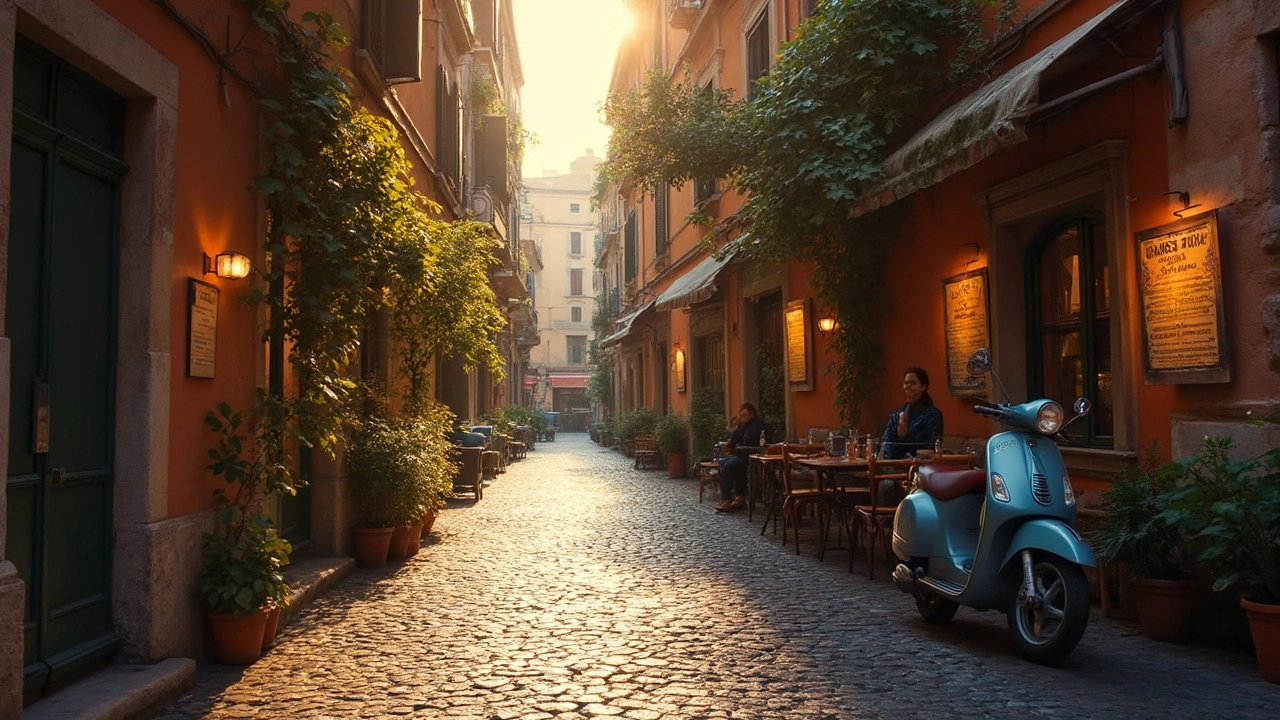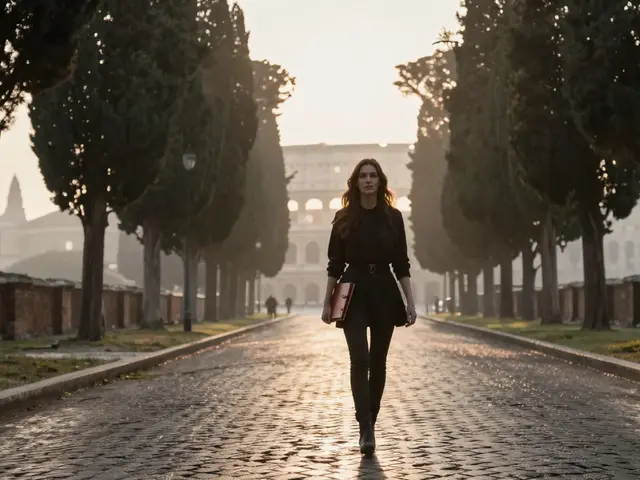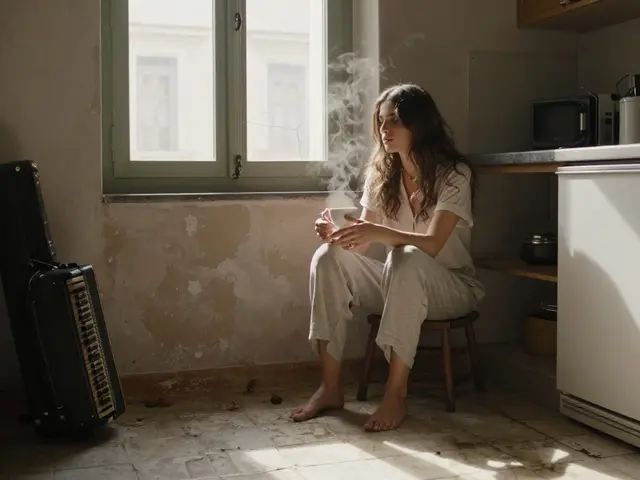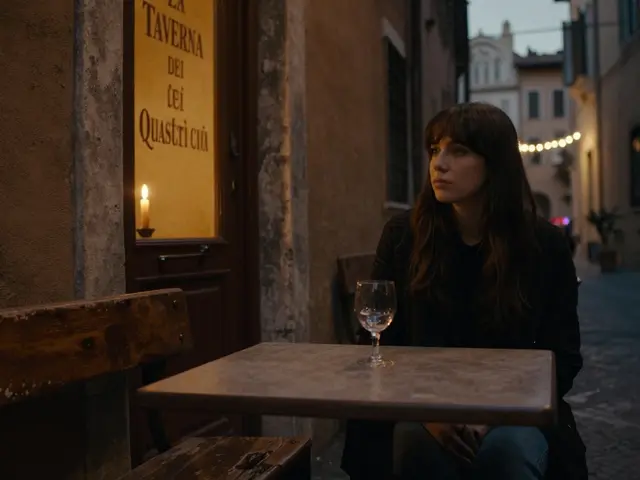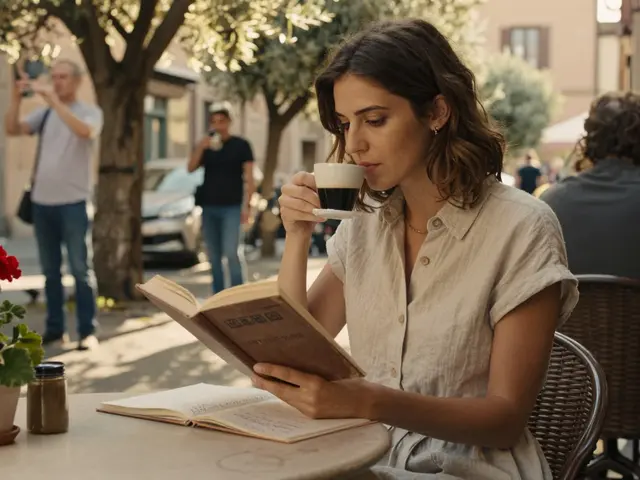Everyone snaps photos at the Colosseum, but have you ever heard of the Aventine Keyhole? Skip the lines, ditch the crowds, and see how real Romans relax, eat, and wander. Danika Mori knows this city like her own backyard, and she’s all about sharing those secret spots you won’t find on TikTok or in travel guidebooks.
If you want a Rome trip that's less selfie-stick, more slow morning espresso at a sunlit corner café, you’re in the right place. These hidden gems aren’t just pretty—they’re packed with history, stories, and locals who might become your new friends. Stick around; the next espresso you sip could be in a place you’d never find on your own.
- Past the Postcard Views
- Neighborhood Eats Only Locals Know
- Secret Streets and Quiet Corners
- Unexpected Art in the Open
- Smart Tips for Exploring Like Danika
Past the Postcard Views
Forget the classic shot in front of the Trevi Fountain—everyone’s done that. Danika Mori’s favorite Rome hidden gems start where the crowds thin out. One standout is the Aventine Keyhole near Piazza dei Cavalieri di Malta. Here, you peek through a simple door and see a perfect view of St. Peter’s framed by gardens. No crowds, no noise—just a unique memory.
Another under-the-radar spot is the Protestant Cemetery in Testaccio. This is where you’ll find the graves of poets Keats and Shelley, surrounded by wildflowers, trees, and local cats napping in the sun. It’s oddly peaceful, and you get a sense of hidden history far from the main roads.
The Orange Garden (Giardino degli Aranci) is another favorite on the Aventine Hill. You get panoramic city views and orange trees everywhere. Unlike the jam-packed Spanish Steps, you can actually hear yourself think up here. It's a popular local spot for picnics and sunset dates. Even better, the garden closes at night, so mornings are practically empty.
“It’s the moments away from tour groups that make you feel like a true Roman,” says Davide Pasquali, a Rome-based city guide. “The local parks and quiet hills have stories tourists totally miss.”
If you want to trade out noisy piazzas for real Roman calm, check out these specifics:
- Aventine Keyhole: Early mornings mean no waiting. Bring your own coffee—there’s no kiosk nearby.
- Testaccio Cemetery: Entry is cheap, about €3. Grab a panino from Volpetti on your way there for a low-key lunch.
- Orange Garden: The best views are just before noon. Weekends fill up with locals, so aim for weekdays if you’re after peace and quiet.
You’ll find these secret Rome spots not only beat the crowds but also give you a new side of the city’s heart. Just step off the main streets—you’ll be surprised how easy it is to find a slice of Rome all to yourself.
Neighborhood Eats Only Locals Know
Forget pizza in a box from any street corner or bland pasta served under a photo of the Colosseum. If you want to eat like a Roman, you need to slide into places where the menu changes with the season and the staff can guess your drink before you order. Danika Mori has her go-to spots scattered all over the neighborhoods and none are on the main drag.
Let’s start in Testaccio. Head to Da Remo for legit Roman pizza—the kind with a bit of char and just enough chew. Locals line up outside but if you slip in before 8pm, you’ll be eating with families, not tour groups. Grab a supplì (crispy rice ball) while you wait. Over in Trastevere, there’s Osteria der Belli; ignore the English menu, look at the handwritten specials. Their amatriciana (pasta with pork and tomato sauce) is a knockout. You’ll see old men playing cards nearby and students taking their break on the steps.
- La Prosciutteria Trastevere – Best boards with meats and cheeses, friendly staff, and no pressure to leave. Danika swears by their truffle pecorino.
- Mercato di San Cosimato – Not a restaurant, but this lively market in Trastevere is perfect for street food and snacks. Try the porchetta sandwich. Mornings are best, after 10am things sell out.
- Forno Campo de’ Fiori – Famous for its pizza bianca (pizza without sauce). Locals grab wedges to eat on the go.
Prices aren’t sky-high in these spots, and you probably won’t find a waiter in a bow tie. No dress code, just good food. If you want to pass for a local, order water without ice and never ask for parmesan on seafood pasta. The trick is to go a bit early or a bit late, just like Romans do, to dodge crowds. If you’re after dessert, try the maritozzo (a cream-filled roll) from Pasticceria Regoli in Esquilino before noon—they’re usually gone by lunch.
Here’s a quick look at how much you might spend at these hidden gems, so you can plan ahead:
| Spot | Must-Try | Typical Price (€) |
|---|---|---|
| Da Remo | Pizza Margherita | 8-10 |
| Osteria der Belli | Amatriciana | 12-14 |
| La Prosciutteria | Meat & Cheese Board | 15-18 (for two) |
| Regoli | Maritozzo | 2.50 |
If you follow these tips and check out these spots, you’ll get a taste of Rome that goes way deeper than any tourist menu. Plus, these are the places where stories happen—over good food, at a worn table, surrounded by locals who know you’re not from around here, but welcome you anyway.
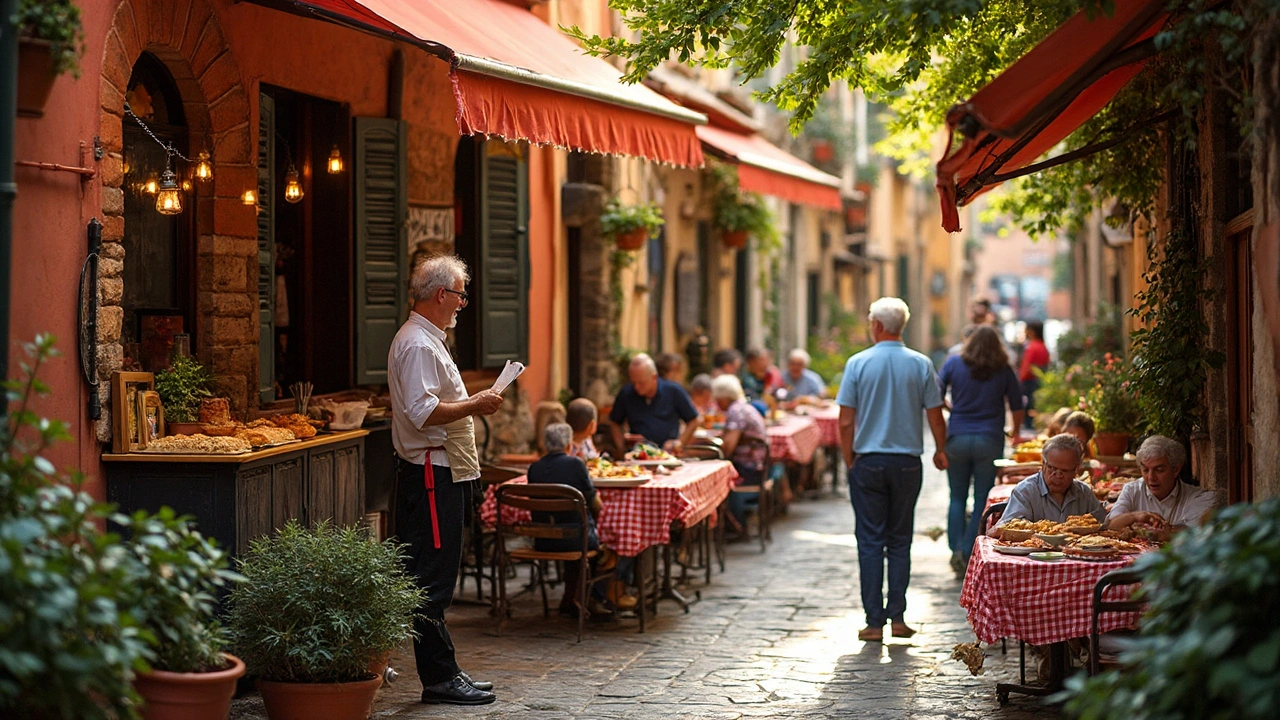
Secret Streets and Quiet Corners
You’ve seen photos of Rome’s busy streets. But step just one block away from the crowds and there’s a whole different side to the city. Danika Mori loves nothing more than wandering these Rome hidden gems—the peaceful lanes, tucked-away courtyards, and alleys where locals go about their day without ever bumping into a tourist group.
One spot she swears by: Via Margutta. This short, tree-shaded street used to attract painters and movie stars (even Audrey Hepburn strolled here in "Roman Holiday"). Now, it’s full of tiny art studios, ivy-covered doors, and the kind of quiet where you can actually hear birds, not horns. Snap some photos—it looks like a movie set, but it’s all real.
Another favorite is Quartiere Coppedè. It’s a small, almost hidden district in northeast Rome packed with fairy-tale houses, mosaics, and weird architecture you won’t see anywhere else in the city. Tourists rarely make the trip, but locals walk their dogs, chat by the Fountain of Frogs (seriously, that’s its name), and enjoy the calm. If you want to see what unexpected old Rome looks like, this is your spot.
- Borgo Pio – Right by the Vatican, but most people completely miss it. This street has pastel buildings, family-run trattorias, and tiny bakeries. It's a shortcut for locals and the perfect place to sit down for a real Roman lunch after a morning at St. Peter’s.
- Via dei Coronari – Steps from Piazza Navona, yet super peaceful. Antique shops line the way, and you’ll find probably the best gelato in the old town at Gelateria del Teatro.
- Ghetto Ebraico (Jewish Ghetto) – Full of history, but it never feels crowded. It’s quieter in the evenings, with great spots for Roman-Jewish food like crispy artichokes.
Here’s a quick look at how these streets compare for chilling out:
| Street/District | Closest Landmark | Best For |
|---|---|---|
| Via Margutta | Piazza di Spagna | Art vibes, shade, peace |
| Quartiere Coppedè | Piazza Buenos Aires | Unique designs, zero tourists |
| Borgo Pio | Vatican | Lunch, old-school shops |
| Via dei Coronari | Piazza Navona | Antiques, top gelato |
| Ghetto Ebraico | Teatro Marcello | History, food, calm |
Best tip? Visit these places before lunch or at sunset. The light’s good for photos, and you’ll catch locals just living their lives. If you want secret Rome spots, skip the maps for a few hours and just follow your nose. Danika promises you won’t get bored—or lost for long.
Unexpected Art in the Open
Forget dusty museums for a second—Rome’s streets are packed with free art hiding in plain sight. Some of the coolest finds come from just walking with your eyes open. Ever heard of the Quartiere Coppedè? It’s a wild blend of Art Nouveau and fantasy stuck right in the middle of a quiet neighborhood. The buildings here look like something out of a movie set, with mosaic tiles, upside-down chandeliers, and even a hidden frog fountain. This spot barely makes it into travel guides, but it’s a favorite for locals and anyone into quirky design. Snap a photo here and watch your friends guess it’s Rome!
If street art is more your vibe, the Ostiense district is a goldmine. Years ago, you’d skip it, but now artists from all over the world have made the walls burst with color and stories. Head for Via del Porto Fluviale to see giant murals, including the famous “Sleeping Beauty” by French artist Seth. It’s all legal, by the way, encouraged by the city to give the area new life. Grab cheap eats nearby and watch new murals pop up almost every month.
For fans of sculpture, Villa Torlonia offers open-air treasures without the crowds of Villa Borghese. You’ll find whimsical art nouveau statues and rare art-deco touches in the gardens. Plus, the Casina delle Civette (House of the Owls) is packed with stained glass windows, and you might meet more cats than people.
If you want something truly out there, check out the urban art project called “M.U.Ro” in the Quadraro neighborhood. It stands for “Museum of Urban Art of Rome” and covers whole blocks with bold, colorful pieces that tell the story of a lively, working-class suburb. The best part? You’ll spot locals chatting on stoops, walking dogs, and just living daily life surrounded by world-class art. It feels real and unfiltered.
- Take early morning walks in Ostiense to see the murals without the traffic.
- Don’t be afraid to wander small side streets in Coppedè—every turn is a surprise.
- Bring a camera, but don’t stick out as a tourist—act like you’re just on your way to work.
If you ever wanted a Rome hidden gem that blends daily life with creativity, these neighborhoods are where to start. You could spend a whole day exploring and barely see another tourist, which is pretty rare here.
| Spot | Type | Best Time to Visit |
|---|---|---|
| Quartiere Coppedè | Architecture & Sculptures | Late Morning |
| Ostiense Murals | Street Art | Early Morning |
| Villa Torlonia | Open-Air Sculpture | Afternoon |
| M.U.Ro Project, Quadraro | Urban Art Gallery | Anytime |
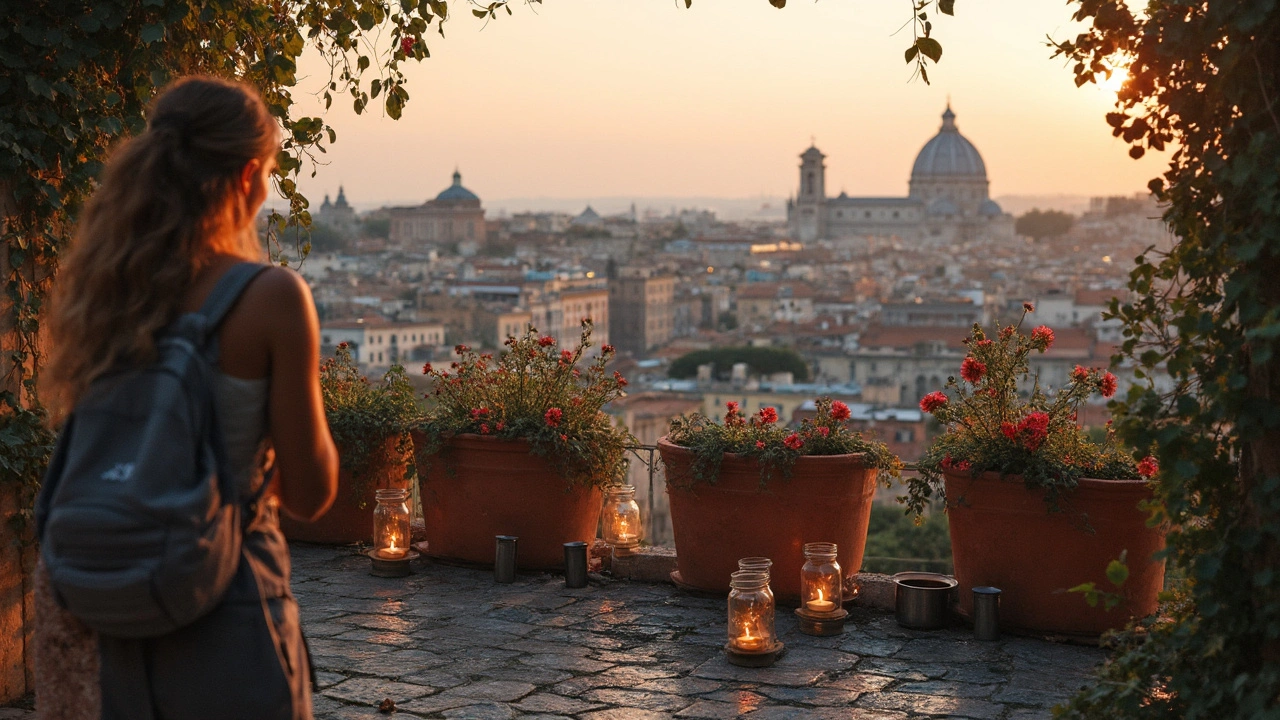
Smart Tips for Exploring Like Danika
You want to find those Rome hidden gems and actually enjoy them, not just check them off some influencer’s list. Here’s how Danika does it and how you can too.
- Travel Off-Peak: Most Romans avoid the hot months of July and August when the city packs out and prices jump. Danika hits her favorite secret Rome spots in May, early June, or late September when the city breathes easier and you don’t sweat through your shirt.
- Walk or E-Scoot, Don’t Uber: Rome’s best stories hide in little alleyways and backstreets. You’ll miss them if you’re just taking taxis. Rent an e-scooter or just walk—Danika swears it’s the only way to really notice details like hidden trattorias or pharmacy windows lined with flowers.
- Eat Where the Waiters Don’t Speak English: If you want the most authentic local food, skip the places with big English menus on the door. Danika finds the best pasta and pizza at small, family-run joints, usually a few blocks from tourist hotspots. If you’re thinking of Trastevere, take a side street and listen for Italian being spoken at every table.
- Early Bird Gets the Calm: Danika wakes up early and grabs coffee from a bar before 8am. Streets are emptier, and spots like the Pantheon or Campo de’ Fiori almost feel like private playgrounds if you go before the bus tours roll in.
- Pocket Some Local Lingo: Even a few Italian words—"per favore" (please), "grazie" (thanks), and "un caffè, per favore"—open doors. Try it with shopkeepers or baristas. Locals appreciate the effort, and you’ll get better service (and sometimes better prices).
If you’re a data person, check this out: Danika keeps a tight travel schedule so she hits spots right before or after peak hours. Here’s what her favorite timing looks like:
| Time | Gem to Visit | Why |
|---|---|---|
| 7:30 am | Aventine Hill Orange Garden | Quiet sunrises, hardly any crowds. |
| 12:30 pm | Testaccio Market | Locals grabbing lunch, best fresh food. |
| 5:00 pm | Trastevere side streets | Shops open, local vibe, golden light for photos. |
Finally, don’t forget to stash a refillable water bottle (Rome’s public fountains, "nasoni," are everywhere and totally safe to drink from), bring cash for tiny shops, and ditch the guidebook. With Danika’s practical approach, every stroll has a shot at turning into a story you'll want to retell.

